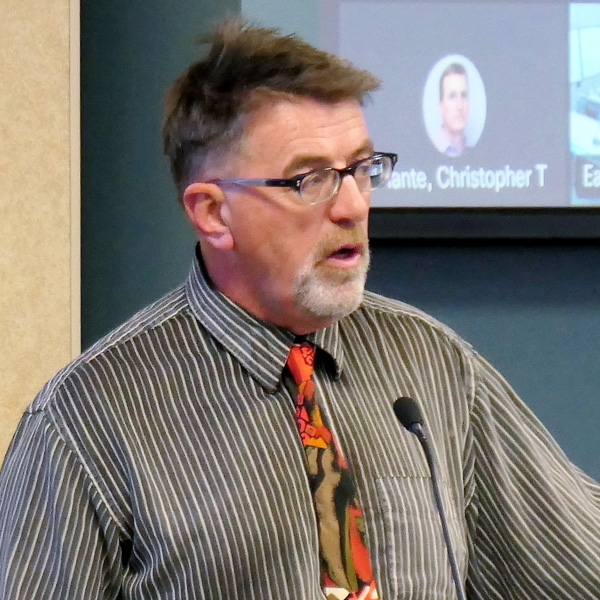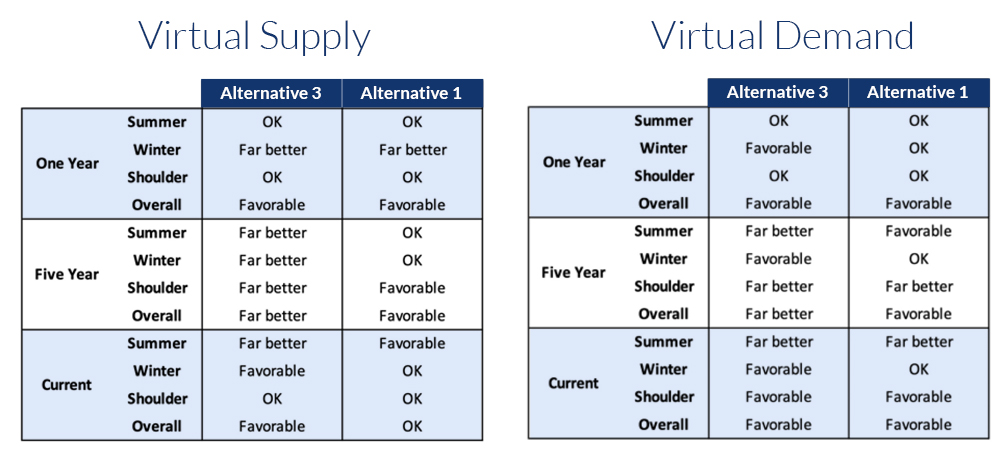CARMEL, Ind. — MISO said last week its members may need to build 200 GW in new installed capacity by 2041 to meet reserve requirements and achieve renewable targets and emissions-cutting goals, according to the RTO’s annual regional resource assessment.
The grid operator used this year’s report, which draws on members’ public generation plans and MISO’s own capacity expansion estimates, to repeat warnings of continuing capacity shortages and plead for more controllable generation. Staff said members may need to construct more than 100 GW of new capacity within the next 10 years alone to meet “publicly announced plans and goals in a reliable manner.”
After the inaugural assessment in 2021, MISO said it would need to add 140 GW of new capacity over the next two decades to meet state carbon-reduction targets while also maintaining reliability. Carbon reduction goals have only become more aggressive in the last year, with utilities frequently revising net zero goals. (See MISO Resource Assessment: 140 GW Needed Within 20 Years.)
This year, MISO focused on accredited capacity numbers. Although it expects members to add 30 GW of net installed capacity by 2041, it said accredited capacity will be at least 10 GW lower than what is available today.
The RTO projects members will likely need to add 47 GW in accredited capacity above the 141 GW of planned and accredited existing resources it expects to have in 20 years. It has approximately 162 GW in total accredited capacity today.
MISO said it will likely approach 30% of its annual energy coming from renewables within five years, with penetration levels increasing by about 10% every five years.
 Systemwide existing, planned, and needed resources | MISO
Systemwide existing, planned, and needed resources | MISO
Its modeling “indicates a continued near-term capacity risk, highlighting the urgent need for coordinated resource planning and additional investment.” Staff stressed that the assessment captures a snapshot in time that relies on publicly available resource planning and isn’t necessarily MISO’s future. They emphasized that MISO members do not produce “detailed” resource plans on a 20-year time horizon.
“In the absence of a coordinated transition plan, having a holistic assessment of our entire operating region is important for our members, policymakers and MISO as we all work to anticipate and manage the complex issues facing our industry,” CEO John Bear said in a Wednesday press release accompanying the report.
According to the report, wind and solar generation will serve 60% of MISO’s annual load by 2041, reducing emissions by nearly 80% relative to 2005 levels. The RTO said that generation mix will “sharply increase the complexity of reliably operating and planning the system.”
The footprint will “have a much greater need for controllable ramp-up capability,” MISO said. It said its short-duration ramp needs will increase three-fold from current levels by 2031, and four-fold by 2041.
MISO also said that by 2031, it will encounter resource adequacy risks in all seasons, not just summer. The grid operator said the risk will mostly be concentrated in the evenings when solar generation tapers off and wind generation is still ramping up.
The RTO found that as more solar capacity is added to the system, the capacity contribution of solar generation “is forecast to decline rapidly,” while wind generation’s contribution remains stable with additions.
“As the MISO region rapidly transitions to a decarbonized fleet, the system will become more interconnected and interdependent,” Jordan Bakke, director of strategic insights and assessments, said. “The task of resource planning is becoming more complex and having a shared understanding of future trends and risks is necessary to ensure reliability.”
MISO has a staggering amount of proposed capacity in the interconnection queue after fielding in September a record 171 GW of proposed renewable generation and storage projects from 956 requests. (See MISO Insists it can Handle Record-setting Interconnection Queue.)
The rub is MISO’s supply of accredited capacity. And while capacity increases, its share of on-demand capacity is drying up.
During a Nov. 10 stakeholder workshop, policy studies engineer Hilary Brown said members are largely planning investments in solar and wind capacity as they schedule more coal generation retirements.
“A one-for-one megawatt replacement is likely not sufficient,” Brown said of members’ plans.
She said MISO expects the near-term capacity risk to continue with the growing need for flexible resources to reinforce intermittent resources.
The RTO’s system simulation showed it will likely need a yet-unknown combination of low-emission, high-capacity grid-enhancing technologies by 2030, including carbon capture and sequestration, small modular reactors, green hydrogen and long-duration energy storage.
Stakeholders have pressed MISO to provide a megawatt value of how much new storage it might need over the next 20 years.


